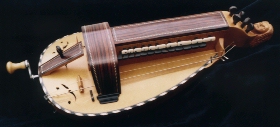
My model is based on an existing model made by Pimpard in the late19th.C. and accurately drawn by J.N.Grandchamp in 1977.
 |
|||
| First developed in
the 18th century, the Lute bodied Hurdy Gurdy has become
the most popular shape in modern times. This popularity
is probably due to its powerful tone which makes it ideal
for outdoor performance and dance accompaniment. My model is based on an existing model made by Pimpard in the late19th.C. and accurately drawn by J.N.Grandchamp in 1977. |
|||
On the subject of accurate copying, it is important to realise the limitations of the original construction. I refer mainly to the design of the wheel and its bearings. These areas are prone wear and distortion which cannot be repaired without serious work to the instrument. The system I use avoids such problems by using a laminated wheel threaded onto the axle and fitted with a thick wooden rim. The axle runs in precision ballraces which require no maintenance or adjustment.
A further facility I have developed is an arrangement for selecting the chanterelles using a rotary knob on the side of the keybox. Also on the keybox side are two push button selectors which engage the Gros and Petite bourdons - this allows drone selection mid performance and eliminates the problems of wear on the drone bridge and the tendency for the drones to lose tuning when manually detached. Photos of a lute back instrument with these features can be found >>>here.<<<
The lute bodied hurdy gurdy is the most complex design
and as such is the most expensive. In order to reduce the cost of a full size
instrument with all the musical features incorporated, I have introduced a " no
frills " model with a simple scroll instead of the carved head. No veneer work
is included with just a simple line inlay on the keybox lid, wheel cover &
tailpiece. The body is Maple and it has a spruce soundboard. A transducer is
built in. 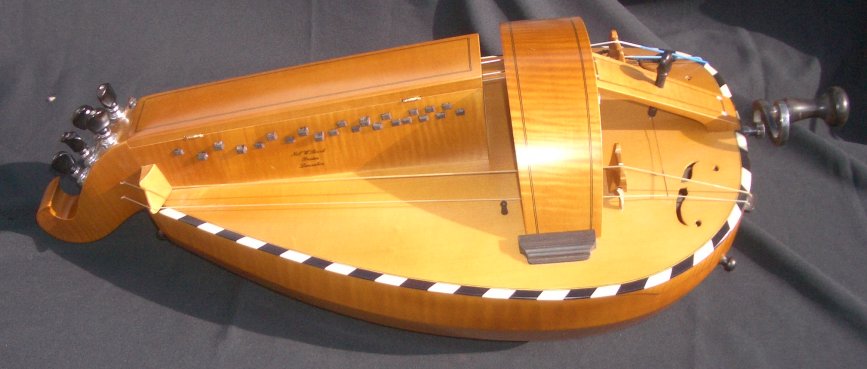
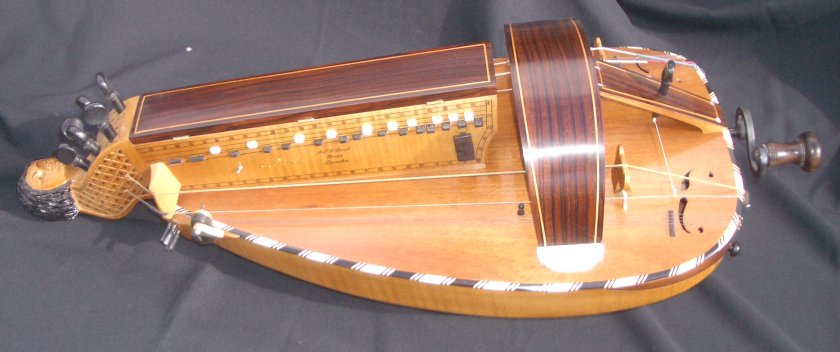
Having restored a mid 19th C. and been very impressed by its sound, I copied its design for this model. It has a mahogany top cut from a Victorian chest of drawers which has many of the same qualities as the 19th C instrument. The body is alternate walnut and maple, the keys are ebony and bone. Macasser ebony veneer with stained maple inlay is used on the keybox lid etc.
It has remote disconnection for the bourdons, a built in Ken Wittman tuner , a capo for the trompette, 8 sympathetic strings and a built in transducer
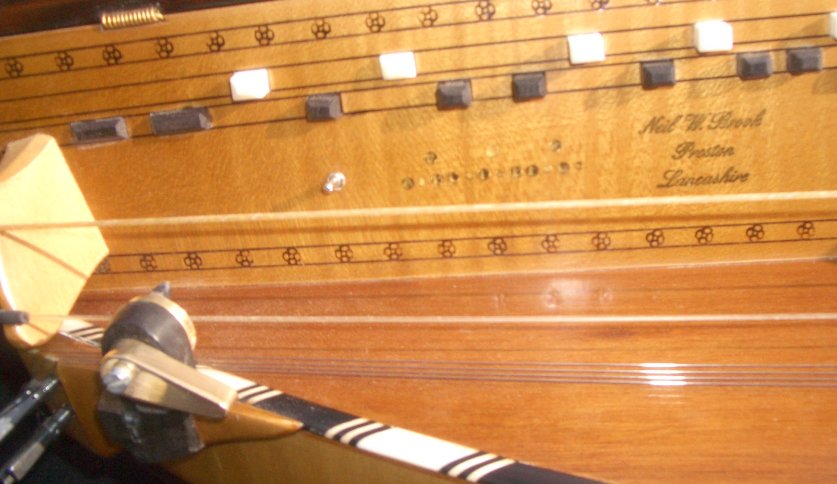 .
.
The tuning pegs look traditional but are actually 4:1
ratio geared machine heads. 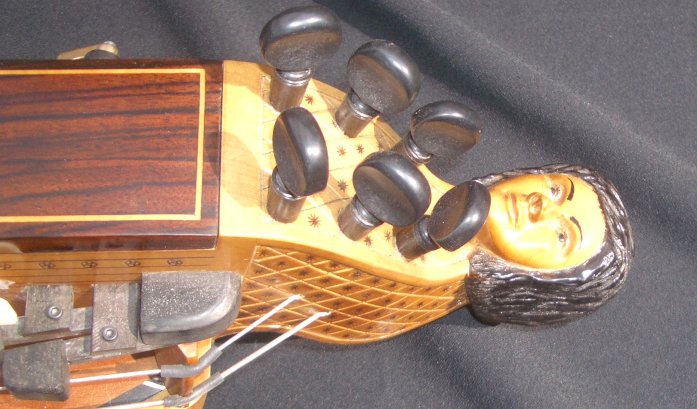
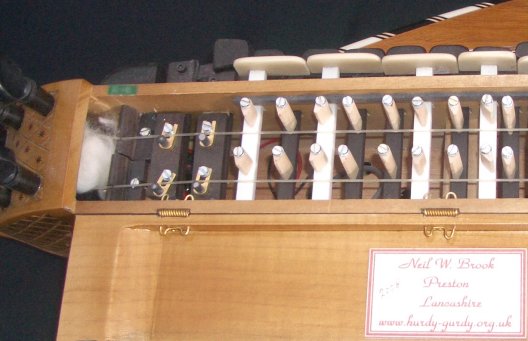
There are two keys below the normal nut position which allow playing of F & F# for leading notes.